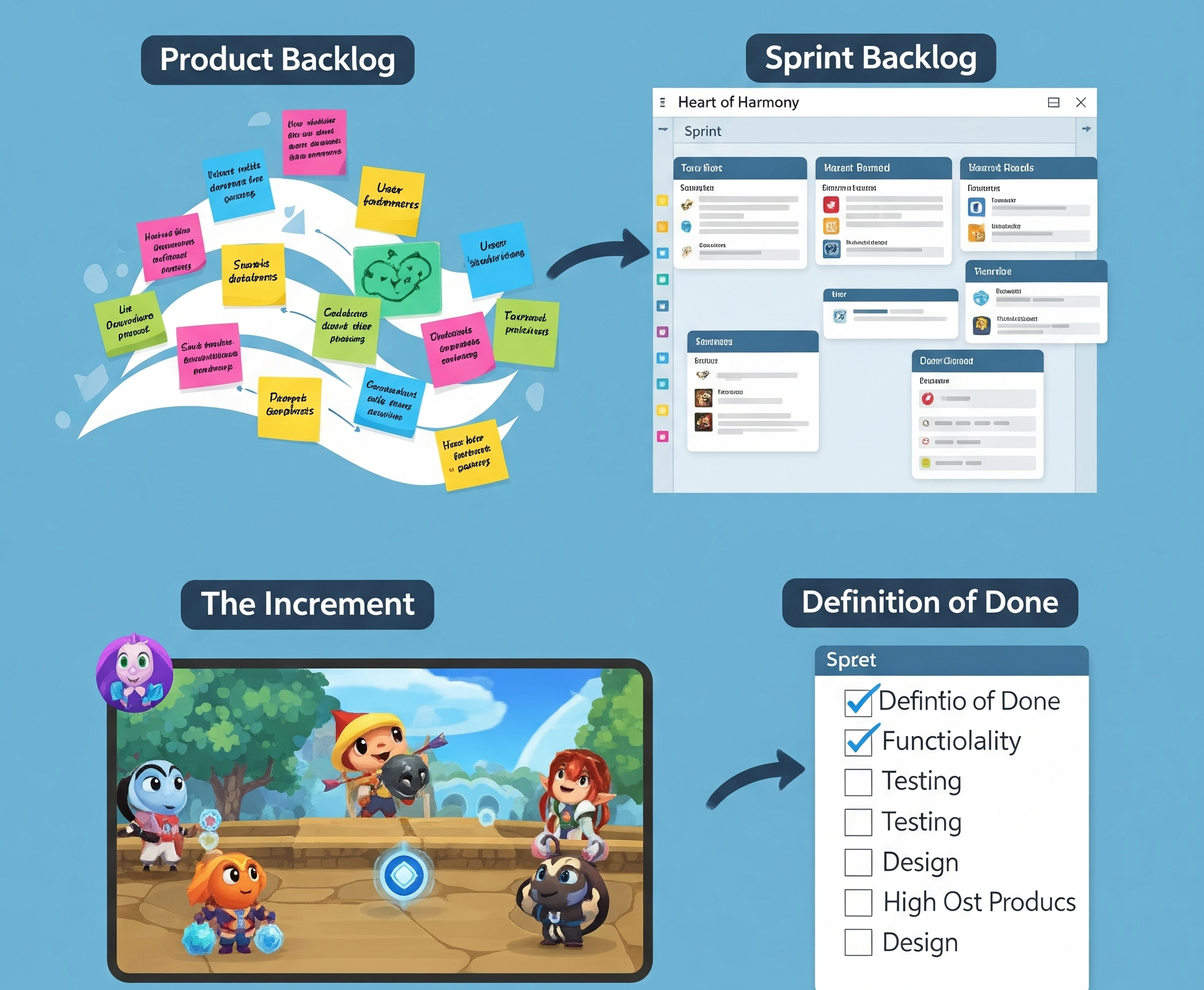
Scrum’s artifacts represent work or value and are designed to maximize transparency of key information. Each artifact has a commitment.
Example: The Product Backlog for the “Heart of Harmony” digital platform would include features like “Online facility booking,” “Volunteer registration,” and “Community event calendar,” ordered by the Product Owner based on value towards the Product Goal.
Example: For the “Heart of Harmony” team, the Sprint Backlog for a given Sprint would include the Sprint Goal (e.g., “Enable basic event sign-ups”), the selected user stories, and the detailed tasks (often decomposed into work of one day or less) for coding, designing, and testing those features.
Example: At the end of each one-month Sprint, the “Heart of Harmony” team produces a “Done,” usable piece of the digital platform, such as a working web page displaying upcoming events with sign-up functionality. This Increment is ready for use.
Example: The “Heart of Harmony” digital team’s Definition of Done might include: “Code reviewed, unit tests passed, integrated into main branch, deployed to staging, UAT passed by Product Owner, user documentation updated.” If another team works on a different part of the platform, they must use the same Definition of Done.
This detailed application, with explicit references to the Scrum Guide’s numbers and core tenets, should provide an excellent foundation for PSM I exam preparation, helping participants visualize and retain the framework’s structure and rules.
Not a member yet? Register now
Are you a member? Login now